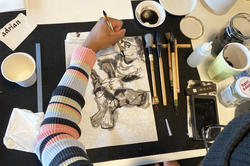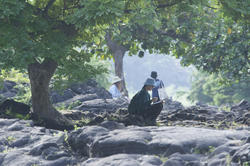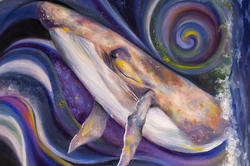Daniel Heyman’s new Wintersession global studies course introduces students to contemporary artists using ancient techniques in the Netherlands and Germany.
New Global Studies Course Connects RISD Students with Traditional Artisans in India
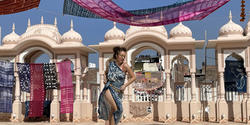
Students who recently returned from a Wintersession global studies course in India collaborated with artisans in Jaipur using handcrafting techniques that have been perfected over hundreds of years.
“Handcraft and gracious hospitality are both embedded in the ethos of the Indian way of life,” says Textiles faculty member Joy Ko. “Students at RISD are trained to be designer, artist and maker but had to first learn how to communicate with their hosts and be good guests before collaborating with the highly skilled, multigenerational artisans they met.”
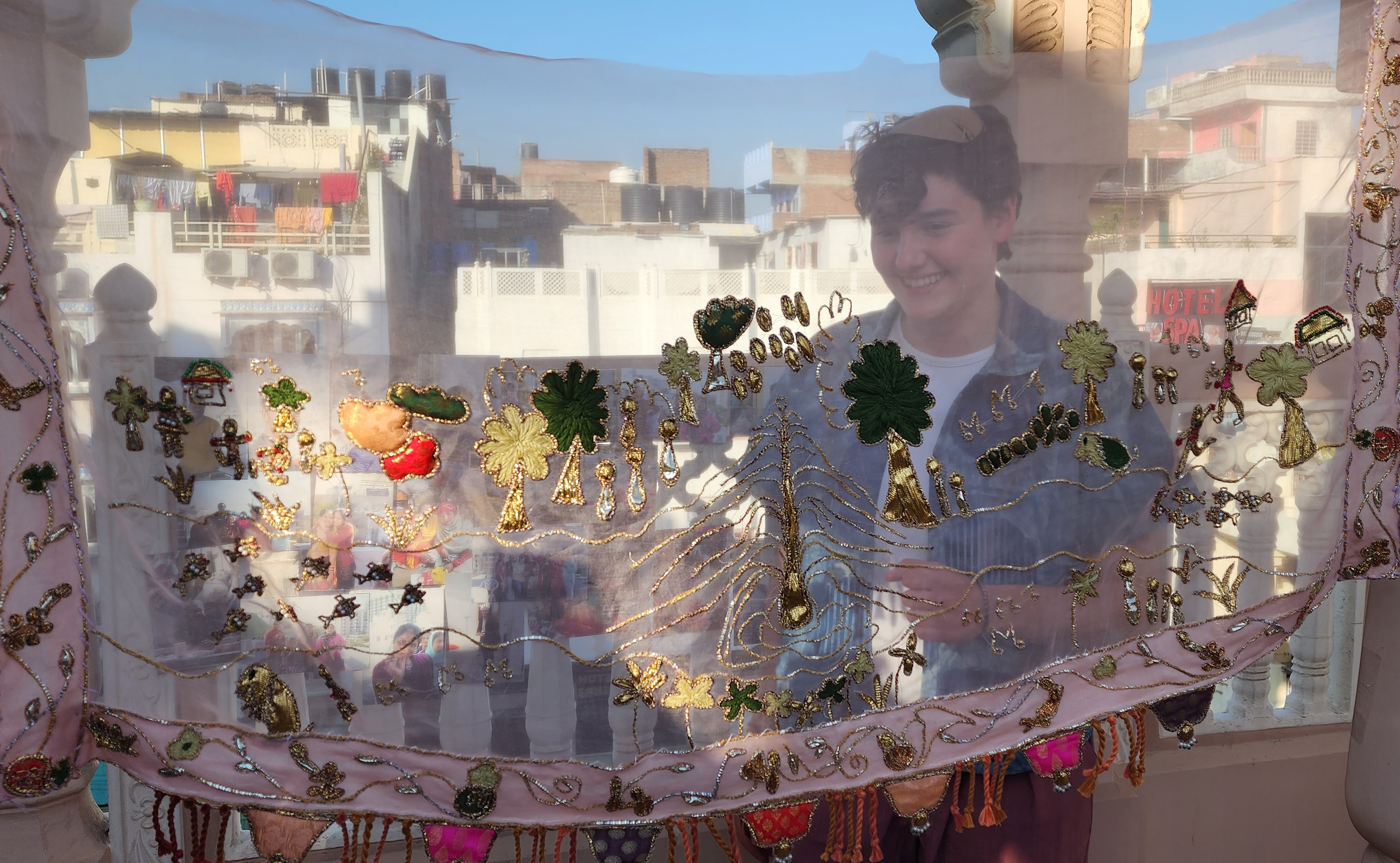
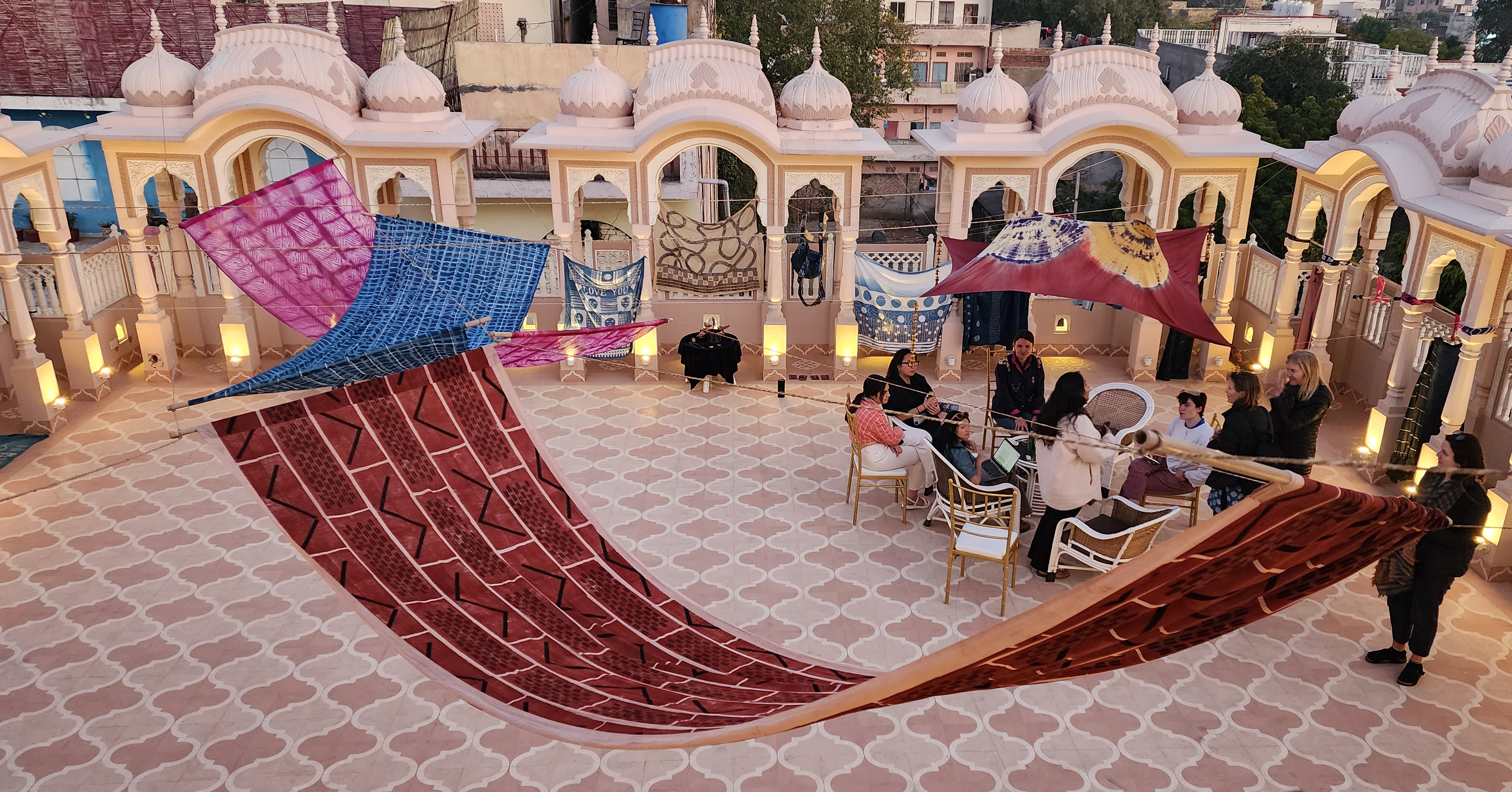
Ko and Apparel Design Professor Catherine Andreozzi 87 AP developed and co-led the course, India_Sensed, whose name became a kind of touchstone for students as their journey unfolded. They found themselves relying on all of their senses as they navigated cities, villages, workshops and studios thrumming with their own rhythms and energies.
“Students learned that they had to make compromises, switch gears and be open to unimagined and unpredicted outcomes.”
“Collaborating with people who don’t speak your language changes the way that you would normally work,” Andreozzi says. “You have to rely on other modes of expression, such as drawing and translation apps that result in laughter and dancing! Students learned that they had to make compromises, switch gears and be open to unimagined and unpredicted outcomes.”
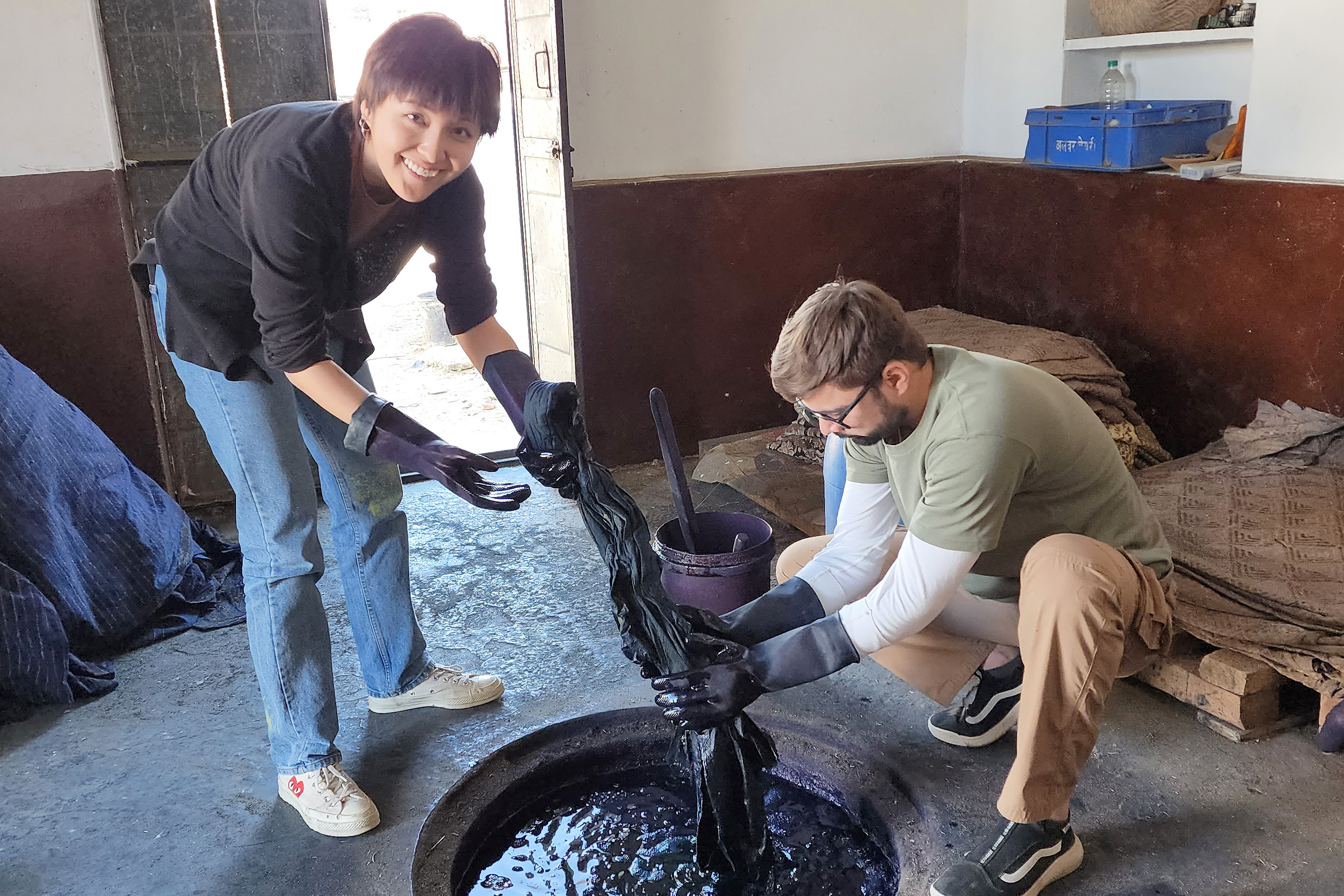
Over the course of several weeks, students worked with master Dabu mud printer Padamshree R K Derawala, jewelry designer Neelum Narang, embroidery master Jayshree Kumavat and Badshah Mian, an expert in Lehariya resist dyeing. Access to these artisans was made possible through a partnership with Sheela Lunkad, Rajeev Lunkad and Sonal Chitranshi of New Delhi-based creative design organization DirectCreate.
“I really can’t say enough about our hosts from DirectCreate,” Andreozzi says. “They scheduled so many rich and joyful activities that immersed us in the culture and paved the way for our work with the artisans."
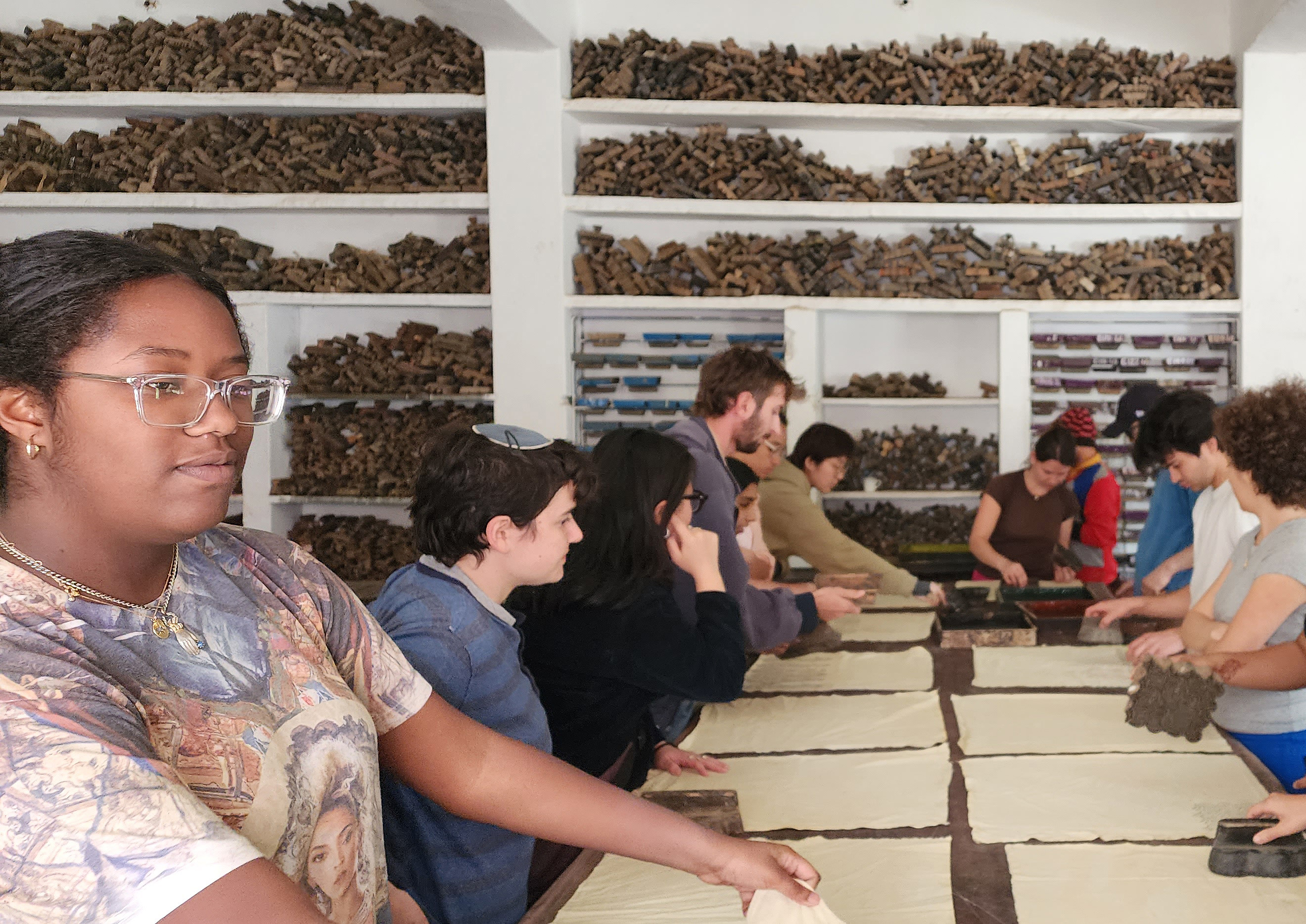
Senior Yue Zi 23 AP, an Apparel Design major, zeroed in on jewelry making for her final project. “My thesis at RISD revolves around my fascination with bones and skeletal forms,” she says. “Inspired by jewelry we saw in the Amrapali Museum, I worked with Neelum and the artisans in her studio to create delicate silver pieces to adorn the hand and highlight its skeletal structure.”
Grad student Isabel Jane Marvel MArch 24 took inspiration from the bold colors of Jaipur and the shapes and decorations she found in Indian military uniform designs to create a unique collection of hand-dyed, hand-embroidered garments for women.
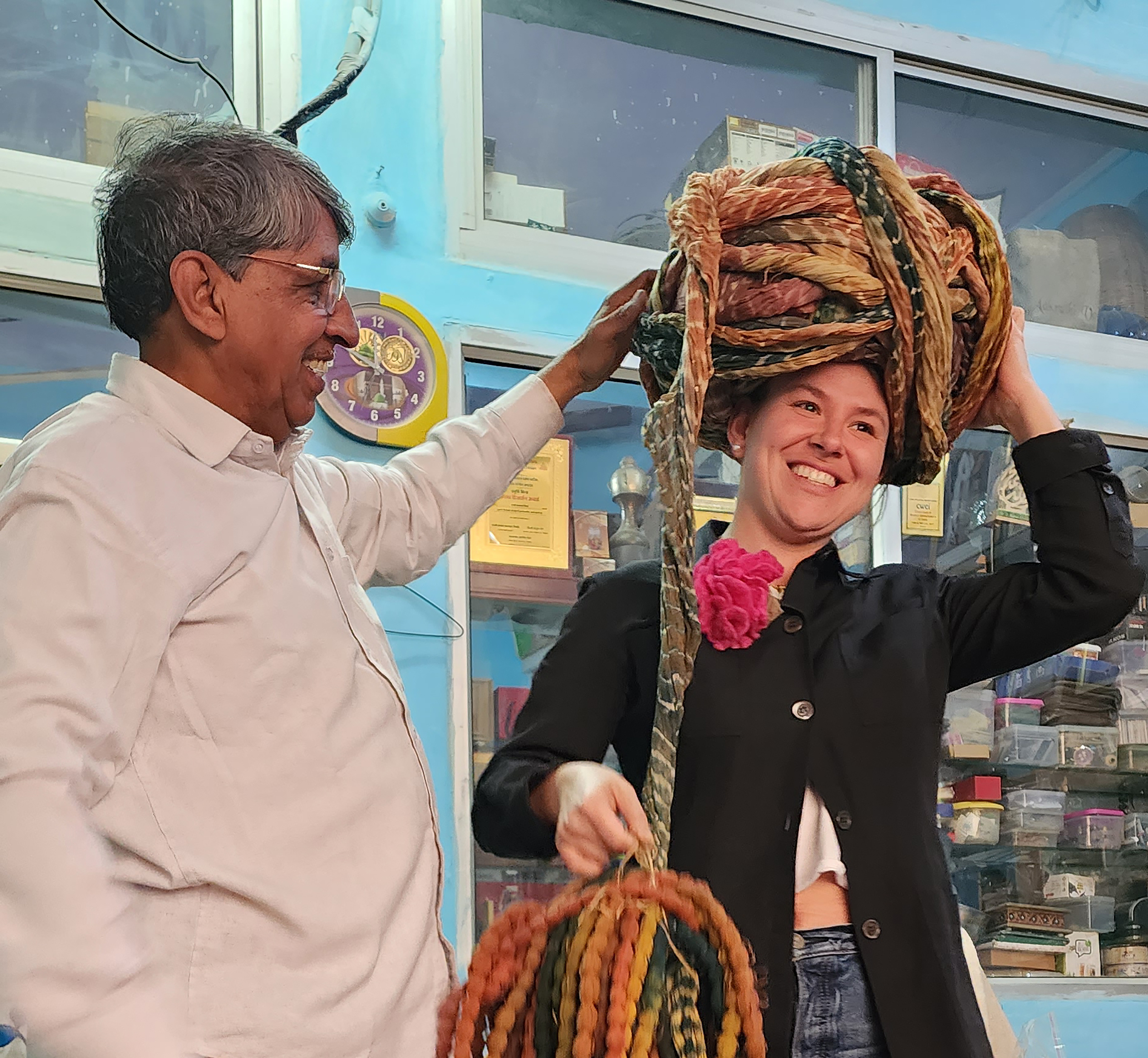
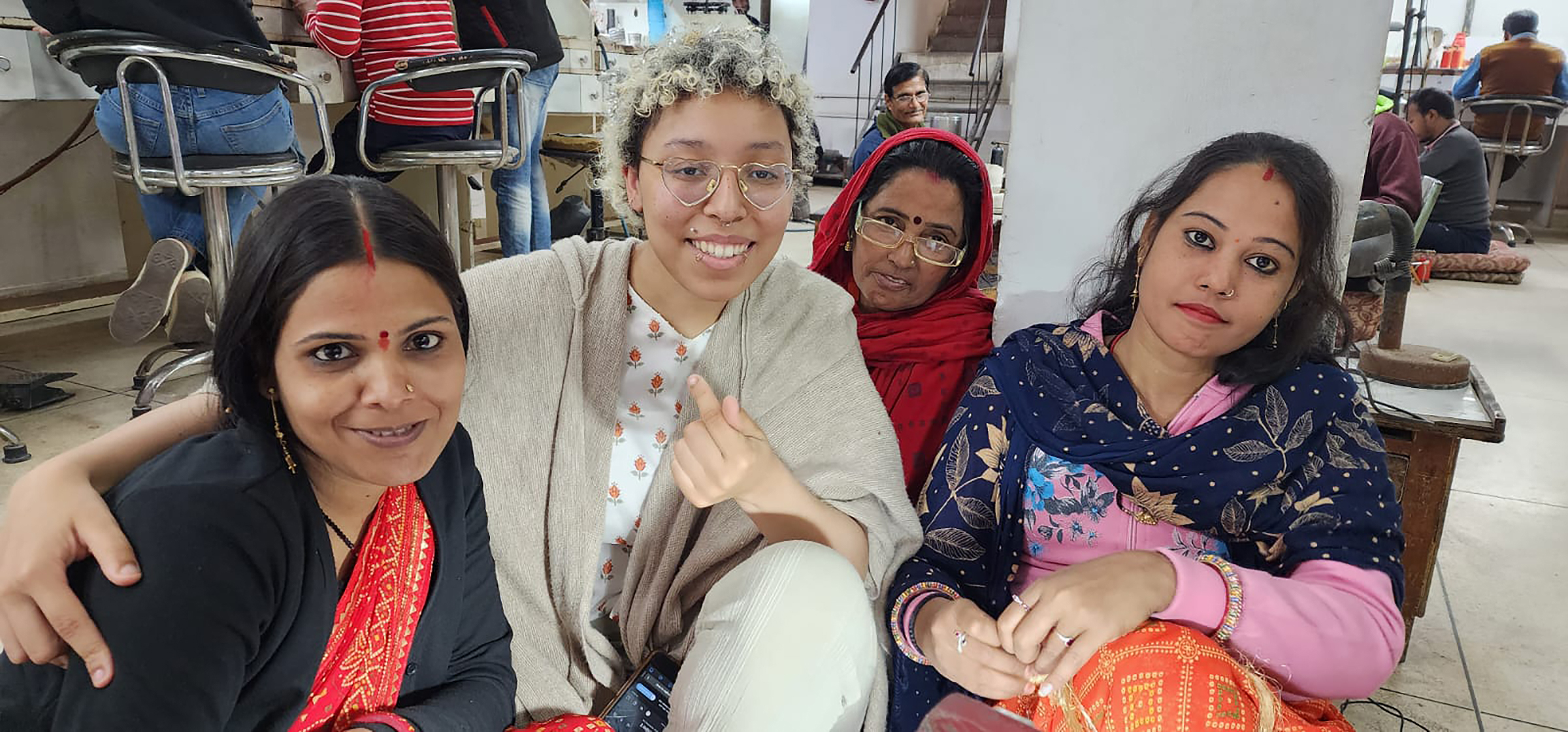
Sophomore Benjamin Garbus 25 ID was particularly drawn to the pattern and structure of the historical sites the class visited on the road to Jaipur. “The way that nature exists in combination with architecture reminded me of nature's role in craft,” he says. “An ant crawling across drying fabric is a part of the making process, just as a monkey crawling on a roof is a part of the building. The unpredictable interaction is what makes the final product unique.”
“Handcraft and gracious hospitality are both embedded in the ethos of the Indian way of life.”
Andreozzi and Ko encouraged students to dig into the processes and experiences they were absorbed in, rather than focusing on creating finished products. “We wanted them to think about the process itself and the communication of ideas,” Andreozzi explains. "The art of collaboration was the most important takeaway.”
—Simone Solondz
February 21, 2023
